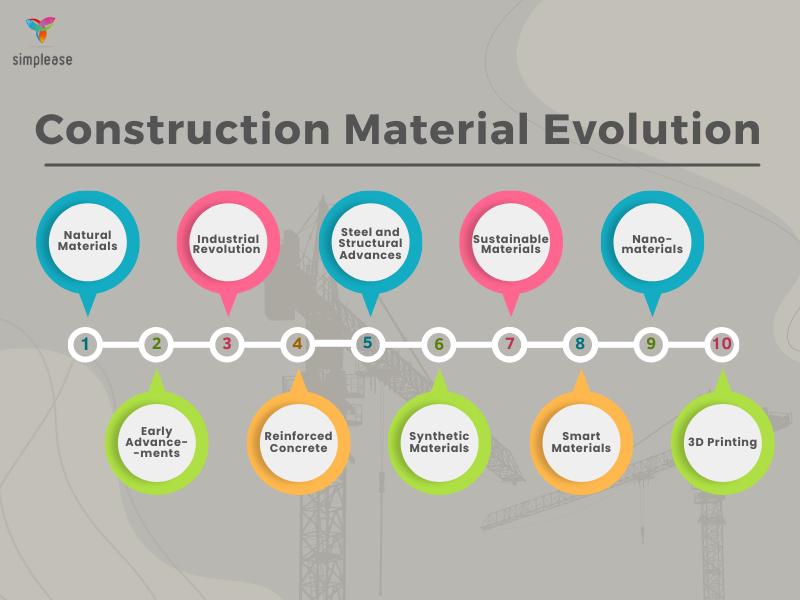CONSTRUCTION MATERIAL EVOLUTION
July 12, 2023

1. Natural Materials: In the early days of human civilization, natural materials such as wood, stone, mud, and animal hides were used for construction.
2. Early Advancements: As civilizations progressed, advancements were made in materials like fired clay bricks, lime-based mortars and plasters allowing for improved bonding and waterproofing.
3. Industrial Revolution: Iron and wrought iron allowed for the construction of large-scale structures like bridges and buildings. The invention of Portland cement led to widespread use of concrete.
4. Reinforced Concrete: Steel reinforcement within the concrete increased its tensile strength, enabling the construction of taller buildings and bridges.
5. Steel and Structural Advances: Steel beams and columns, revolutionized building design and allowed for flexible and efficient construction methods.
6. Synthetic Materials:. Materials like plastics, polymers, and composites offered. Fiberglass, found applications in insulation, roofing, and structural components.
7. Sustainable Materials: Recycled materials, such as reclaimed wood and recycled concrete aggregates, have gained popularity. bamboo and engineered wood products are being used as eco-friendly alternatives.
8. Smart Materials: These materials can respond to external stimuli, such as temperature changes, and adapt their properties. Examples include self-healing concrete, shape-memory alloys, and photovoltaic glass, which can generate electricity.
9. Nanomaterials: such as carbon nanotubes and graphene, exhibit exceptional strength, electrical conductivity, and other desirable properties.
10. 3D Printing: The emergence of 3D printing technology has allowed for the fabrication of complex geometries and customized structures.
To read more such content, subscribe to our Newsletter!


